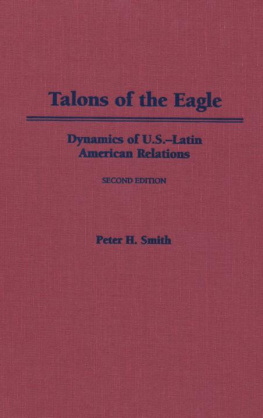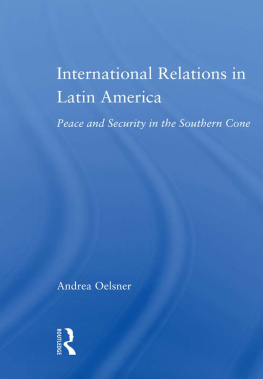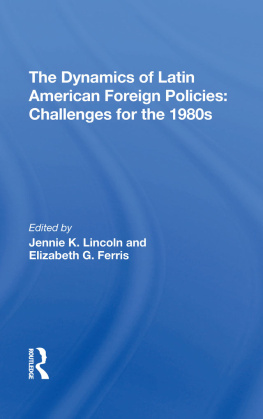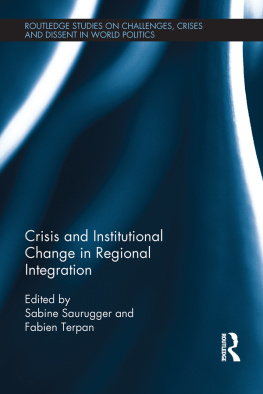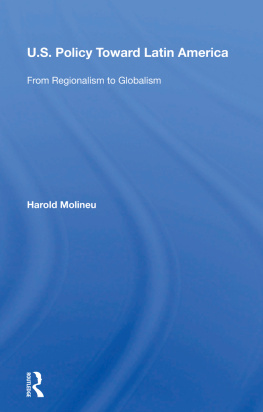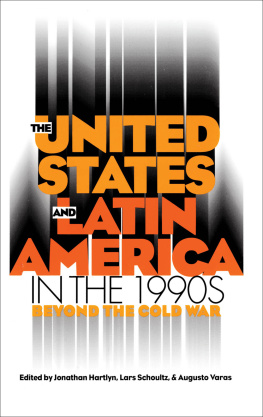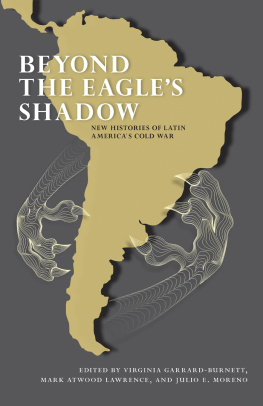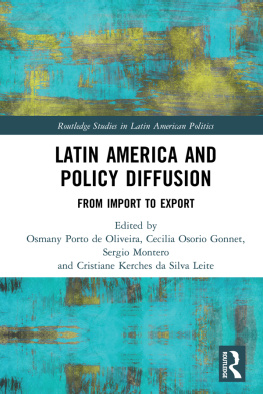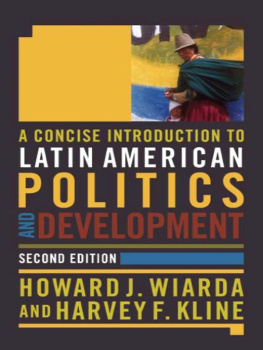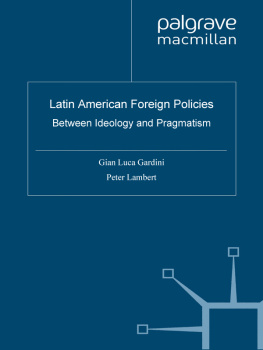Peter H. Smith





For My Students
iX
Xi
I The Imperial Era
II The Cold War
III Age of Uncertainty
This book is a personal statement.
It reflects my belief that historical perspective is absolutely essential for the comprehension of contemporary international realities. Over the past few years there has been much discussion, often naive and shortsighted, about the end of the Cold War and its presumably benevolent impact on U.S.-Latin American relations. In my opinion we can assess the novelty and significance of the current situation only by comparing it with previous epochs-not only with the time of the Cold War itself but also with the era stretching from the American Revolution up through World War II.
It reflects my commitment to interdisciplinary scholarship. The analysis attempts to blend insights from political science and international relations with the study of diplomatic, intellectual, cultural, and political history-of Latin America, the United States, and other parts of the world. There has been remarkably little communication between these apparently disparate fields. This volume seeks to draw some new connections.
It reflects my conviction that U.S. citizens-commentators, policymakers, investors, and others-must pay close attention to Latin American viewpoints. Too often the study of inter-American relations deteriorates into the study of U.S. foreign policy. One of my central arguments is that there has existed a coherent logic, at times infernal and perverse, in the conduct of U.S.-Latin American relations; an understanding of that logic requires an understanding of Latin American feelings, attitudes, and actions.
It expresses my appreciation for the task of intellectual synthesis, as distinct from original research. This book does not present an exhaustive chronology of U.S.-Latin American relations. My goal is to offer a conceptual framework for the comprehension of changing patterns of interAmerican relations over a span of nearly two centuries, and to substantiate that analysis with solid factual evidence. The result is interpretive history (or, if one permits, historical political science). Of necessity, many topics and episodes receive cursory description. As a scholar, I am acutely aware that colleagues have published entire books on subjects that warrant only a paragraph or single sentence here. As a writer, I have sought to achieve the benefits of brevity without incurring costs of superficiality. (For the sake of readability, I have placed all statistical tables in an appendix to the text.)
Finally, the volume fulfills an obligation-to the students, undergraduate and graduate, North American and Latin American, who have stimulated, provoked, challenged, and refined my thinking on U.S.-Latin American relations. Over the past thirty years it has been my privilege to work together with outstanding young men and women-at Dartmouth College, the University of Wisconsin-Madison, the Massachusetts Institute of Technology, the University of California, San Diego, and various institutions throughout Latin America. To all of them I dedicate this book.

Years of reading, observation, and reflection on U.S.-Latin American relations have left a mountainous accumulation of intellectual debts. Here I can acknowledge only a few.
From the initial conception of this book Nancy Lane, of Oxford University Press, consistently offered support, advice, and encouragement. Her successor, Gioia Stevens, was equally supportive through work on this second edition.
A remarkable corps of students at the University of California, San Diego worked with me throughout the process of research and writing. Cynthia Alvarez, Ken Maffitt, Dan Nielson, Lara Slater, and Marc Stern supplied crucial information on specific topics. Over extended periods Carlos Cervantes, Julie Grey, Armando Martinez, and Antonio OrtizMena L.N. gathered multitudinous materials on an infinite variety of subjects with relentless efficiency and boundless cheer.
Gracious colleagues, among them Gary Gereffi, the late Joseph Grun- wald, David A. Lake, Manuel Pastor, and Mark Spalding, were kind enough to furnish helpful clues to sources, data, and ideas. Paul W. Drake and Manfred Mols read the entire manuscript with care and a constructive spirit, as did graduate students in my UCSD seminar on Latin American politics; I have benefited greatly from their comments and suggestions.
I close on a personal note. During the course of this project Jennifer L. Troutner became my closest friend, partner, counselor, critic, companion, comrade-at-arms, spouse, and mother of our two wondrous daughters, Sasha and Amanda. It is she who made the whole thing possible.


Relations between the United States and Latin America face unprecedented uncertainty. World events since 1989 have shattered long-held assumptions about international order. The ending of the Cold War-from the collapse of the Berlin Wall to the liberation of Eastern Europe to the implosion of the Soviet Union-has led to epochal rearrangements in the distribution of power, terms of conflict, and patterns of alignment. Early optimism about the creation of a "new world order" has given way to widespread apprehension about ethnic strife, religious war, economic rivalry, and international chaos. As the United States has sought to define its interests and its role in this fast-changing panorama, nations of Latin America have attempted to identify their own options and alternatives. All countries of the hemisphere confront perplexing questions: What is the effect of the end of the Cold War on U.S.-Latin American relations? What are the governing principles of inter-American relations? What will happen in the years ahead?
Widespread expectations envision the hopeful possibility that the United States and Latin America will be able to pursue shared interests in a spirit of cooperation. The Cold War exercised an essentially distorting influence on relationships within the hemisphere, according to this argument, and in its absence nations of the Americas can recognize and act upon a natural harmony of interests. Increasing trade and investment will lead to a convergence of economic purposes, the liberalization of markets will promote political democracy, and the emergence of like-minded leaders will eliminate sources of unnecessary conflict between the United States and Latin America. As officials in Washington are wont to proclaim, the post-Cold War environment offers an unprecedented opportunity to forge a "community of democracies" throughout the Western Hemisphere.

